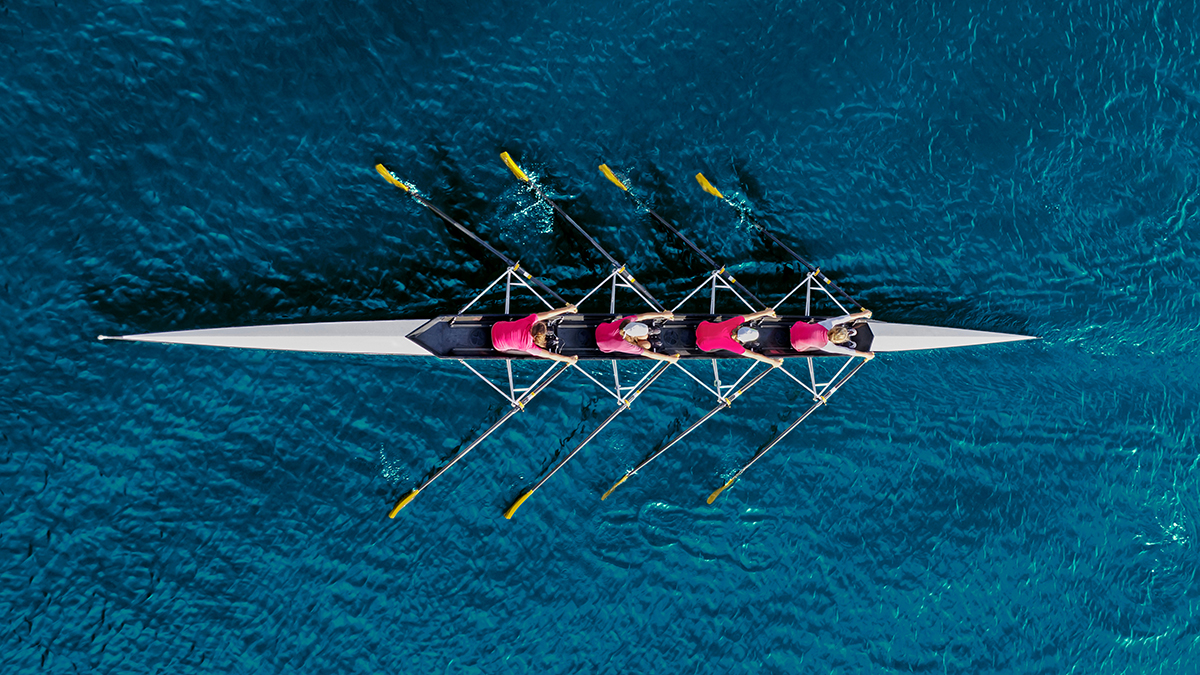The topic of Boats and Streams is very important as there are questions in almost every competitive examination from this area. The concept is easy to understand and is related to the topic of Time, Speed and Distance. Let us start the topic with basic definitions.
A boat is said to go downstream if it is moving along the direction of the stream. The net speed of the boat in this case is called downstream speed.
A boat is said to go upstream if it is moving in the direction opposite to the direction of the stream. The net speed of the boat in this case is called upstream speed.
Let the speed of the boat in still water is 'b' km/hr and the speed of the stream is 'w' km/hr. When the boat goes downstream then the speed will be (b + w) km/hr as in this case the water will take the boat along with it.
When the boat goes upstream then the speed will be (b - w) km/hr as in this case the water will offer resistance to the boat.
Let the downstream speed = d = b + w ……….(i)
Then the upstream speed = u = b – w ………(ii)
Adding the two equations, we get 2b = d + u.
⇒ b = (d+u) / 2 which gives the speed of the boat in terms of downstream and upstream speed. Subtracting the equation (i) and (ii), we get d – u = 2w ⇒ w = (d-u) / 2 which gives the speed of the stream in terms of downstream and upstream speed. You should remember these boats and streams formulas.
Some Important Shortcuts:
Suppose a man can row a boat at a speed of r km/hr in still water and covers the same distance up and down in a stream while a stream flows at a speed of s km/hr. His average speed will be :
A man rows downstream by covering a certain distance in p1 hours and returns the same distance upstream in p2 hours. If the speed of the stream is s km/hr, then the speed of the man in still water will be :
A man takes same number of times say m times to row upstream as to row downstream a river. If the speed of the man is r km/hr and the speed of the stream is s km/hr, then
Solved examples:
Example 1. The speed of the boat in still water is 20 km/hr and the speed of the stream is 5 km/hr. Find the downstream speed and the upstream speed.
Sol : Here we have b = 20 km/hr and w = 5 km/hr
So the downstream speed = b + w = 20 + 5 = 25km/hr
The upstream speed = b – w = 20 - 5 = 15 km/hr
Example 2. A man can row 10 km downstream in 15 minutes and the same distance upstream in 20 minutes. Find the speed of the boat in still water and the speed of the stream.
Sol : The distance covered by the man downstream in 15 minutes = 10 km, so the distance covered downstream in 60 minutes = 40km. Hence the downstream speed = d = 40 km/hr
The distance covered upstream in 20 minutes = 10 km, so the distance covered downstream in 60 minutes = 30 km. Hence the upstream speed = u = 30 km/hr.
The speed of the boat = (d+u)/2 = (40+30)/2 = 35km/hr
The speed of the stream = (d-u)/2 = (40-30)/2 =10/2 = 5km/hr
Example 3: A boat running downstream covers a distance of 24 km in 3 hours while for covering the same distance upstream, it takes 6 hours. What is the speed of the current?
Sol: The downstream speed = 24/3 = 8 km/hr
The upstream speed = 24/6 = 4 km/hr
The speed of the current = (8-4)/2 = 4/2 = 2km/hr
Example 4: Speed of the boat in still water is 15 km/hr and the speed of the current is 7 km/hr. Find the total time taken by a man rowing to a place at a distance of 88 km and back.
Sol: The downstream speed is 15 + 7 = 22 km/hr and the upstream speed = 15 - 7 = 8 km/hr.
The total time taken = (88/22) + (88/8) = 4+11 = 15hours.
Example 5: The speed of the boat in still water is 30 km/hr. It goes 75 km downstream and comes back in 9 hours. Find the speed of the current.
Sol: Let the speed of the current = 'x' km/hr
We have 75/(30+x) + 75/(30-x) = 9
⇒ 75(60/(900-x2)) = 9
⇒ 900-x2 = 500
⇒ x2 = 400
⇒ x = 20km/hr
Example 6: A boat takes 2.5 hours less to travel 100 km downstream than to travel 75 km upstream. If the speed of the current is 5 km/hr, find the speed of the boat in still water.
Sol: Let the speed of the boat is 'x' km/hr. We have
75/(x-5) - 100(x+5) = 5/2
⇒ 25(3(x+5) - 4(x-5) / x2 - 25) = 5/2
⇒ 10(3x+15 - 4x+20) = x2 - 25
⇒ 10(35 - x) = x2 - 25
⇒ 350 - 10x = x2 - 25
⇒ x2 + 25x - 15x - 375 = 0
⇒ x(x+25) - 15(x+25) = 0
⇒ (x+25) (x-15) = 0
⇒ x = 15 km/hr (Rejecting the negative value)
Example 7: A man can row 8 km/hr in still water. If the speed of the current is 2 km/hr and it takes 4 hours to a man to row a place and come back, then how far is the place?
Sol: The downstream speed = 8 + 2 = 10 km/hr and the upstream speed = 8 - 2 = 6 km/hr
Let the distance is 'x' km. We have
(x/10) + (x+6) = 4
⇒ x((3+5) / 30) = 4
⇒ x = (4*30) / 8 = 15km.
Example 8: A boat running upstream takes 4 hours 24 minutes to cover a certain distance, while it takes 2 hours to cover the same distance running downstream. What is the ratio between the speed of the boat and speed of the water respectively?
Sol: Let x be the speed of boat and y be the speed of water ∴
⇒ 22/5(x-y) = 2(x+y)
⇒ 11x-11y = 5x+5y ⇒ 6x=16y ⇒ x/y = 8/3
Hence the ratio of the speed of the boat and speed of the water is 8: 3.

